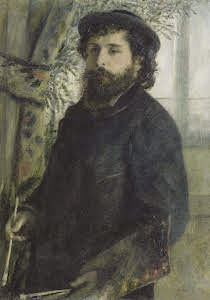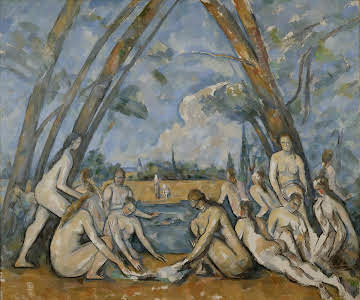An Introduction to Impressionism: A Legacy of Bright Shadows
“What seems most significant to me about our movement [Impressionism] is that we have freed painting from the importance of the subject. I am at liberty to paint flowers and call them flowers, without their needing to tell a story.” ― Pierre-Auguste Renoir

Claude Monet, Impression, Sunrise- Oil on Canvas, a scenery of the port of Le Havre covered in fog.
Impressionism marks the division between the rigid rules of the classic art and the fluidity of modernist style movements. It was only the beginning of an artistic era that paved the way for many liberal ideas to turn to artistic styles.
Like any other new idea, impressionism was shoved aside for its lack of conformity with was already established as accepted; animosity to classic aesthetic, bold use of color and contrast that was not realistic, unapologetic brushstroke, and a sense of movement in contrast with statuesque nature of classic paintings.
What is Impressionism?
Impressionism started in France in the mid-19th century, consequent to the invention of photo cameras. This invention, along with enliven nights of the modern life in the industrial era, shone a light on the creative imagery; the idea was to capture the motion of life through a unique transience of light throughout the image.
The initial painting of Claude Monet, the central figure of the movement, and his compatriots were ridiculed by the academic art society. Having been rejected, the founding artists- Monet, Pissarro, Sisley, Renoir, Bazille and Degas and many others who increasingly sided with the movement in the initial standing- combined efforts and created their own gallery.
At the time, the exalted exhibitions of classical painters of France and the entire western world were showcased at the annual salon of Académie des Beaux-Arts. The annual exhibitions were visited and commented upon by stately artists and even regal guests. In a rebellious response, the impressionist created Salons des Refusés in 1874. The Salon of the Refused became the international hub of the impressionist and hence the birthplace of the movement.
Characteristics of Impressionism in Art
Parisian urban scenes, agricultural fields, riverbanks and industrial life were the keynotes of the early impressionist works. Though uniqueness was noticeable from the works of one artist to another, all shared the common motif that was light and its projection- whether on water, scattered over the swaying wheat cultivations, or the starry nights.
Unlike the old way of painting that was limited to frescoing the walls or indoor galleries, impressionists sought the outdoors. They often carried their approvisionnements d’art under the sky- what was commonly referred to as en plein air creation scenes.
Another major characteristic was the act of small, similar and recurrent shapes on each work of art; perhaps in the form of brushstrokes, quick color dabs, or light glitters and other patterns. These repetitions aimed to capture the fleeting impressions of light- hence the inspiration of the name, impressionism.
Substituting the color of shadows was a huge source of dispute, and evidently, a major characteristic of these paintings. Red, yellow, green and other bright colors were used instead of previously gray and black shadows. Doing so, fine details of realistic and romantic paintings turned into “clumsy silhouettes” that meant to transmit a feel rather than a perfect depiction.
In addition, the quick changing nature of the light outdoors forced the artist to create their art in quick motions. Therefore, very little care was given to details and perfecting figures and objects’ outlines.

Vincent van Gogh, The Starry Night, Saint Rémy, June 1889
“Recently I’ve been working very hard and quickly; in this way I try to express the desperately fast passage of things in modern life.” ― Vincent van Gogh, from The Letters of Vincent van Gogh
CLAUDE MONET
The first impressionists, such as Claude Monet, were intrigued by natural scenery except for a few like Degas who were inclined to urban scenes and perspective of life and lifestyles. Monet was famed for its asymmetric works that were initially judged as crude by the academy. At any length, he endeavoured to be entitled as the father of impressionism.

A portrait of Claude Monet by Pierre Auguste Renoir, Oil on Canvas. 1875
“Impression — I was certain of it. I was just telling myself that, since I was impressed, there had to be some impression in it … and what freedom, what ease of workmanship! Wallpaper in its embryonic state is more finished than that seascape.” - Claude Monet.
His painting Impression Sunrise gave the name to the movement. Until today, he is revered for his revolutionary mind and his stance in the following generations of modern art.
The Heritage of Impressionism
The legacy of the early masters lived on in an elixir of reactions, criticism and recreations of the Impressionists. Soon after, post impressionism called the attention of the artistic world, bringing forth grand artists like Paul Cezanne and Vincent Van Gogh, among others, from 1860 well to the early 1900s.

The Large Bathers, Paul Cézanne, Oil on Canvas, 1900-1906.
Impressionism in Music and Literature
Though paint canvases were the main playground for the impression-ism, literary and musical worlds did not fall behind. Musical Impressionism brought a sense of environment and impression of a peculiarity of a certain space. Masterpieces such as “Once Upon a Time in Paris” by Erik Satie, or “Clair de Lune” by Claude Debussy are still the musical motifs of movies, art galleries and quaint Parisian-esque cafes.
In literature, impressionism was mostly limited to prose and poetry by French writers. During the literary bloom of Paris, subsequent with the post impressionists. Impression making literature that used reparation and syntactic variation became the prominent style of very well-known writers-while others used it sparingly.
Ernest Hemingway mentions in his Autobiography, A Moveable Feast; “If I walked down by different streets to the Jardin du Luxembourg in the afternoon I could walk through the gardens and then go to the Musée du Luxembourg.... I went there nearly every day for the Cézannes and to see the Manets and the Monets and the other Impressionists that I had first come to know about in the Art Institute at Chicago. I was learning something from the painting of Cézanne that made writing simple true sentences far from enough to make the stories have the dimensions that I was trying to put in them.”
References:
James E. Cutting, Impressionism and it canon, Cornell University- May 2006
Phoebe Pool, Impressionism (Oxford University Art Ebook), 1967
Image Sources:
Courtesy of www.Claude-Monet.com, Impression, Sunrise.
Courtesy of MoMa, Vincent van Gogh, The Starry Night.
Courtesy of www.Claude-Monet.com, A portrait of Claude Monet by Pierre Auguste Renoir.
Philadelphia Museum of Art, The Large Bathers, Paul Cézanne.




Bình luận